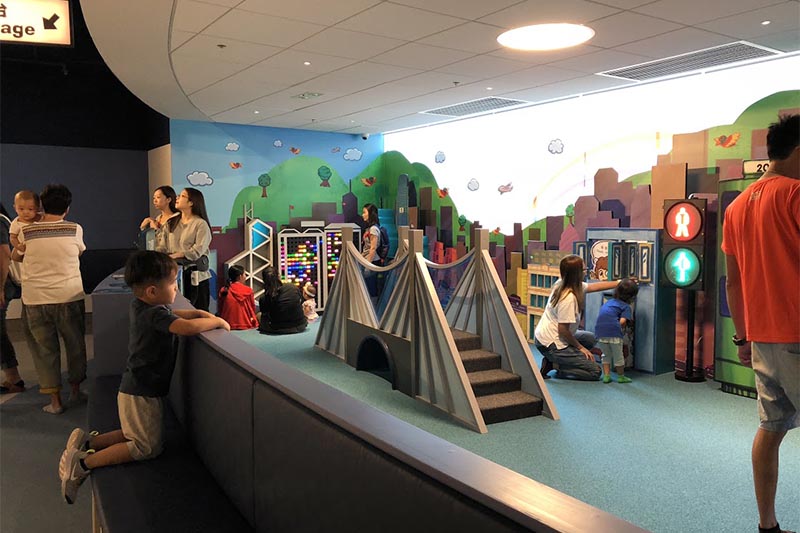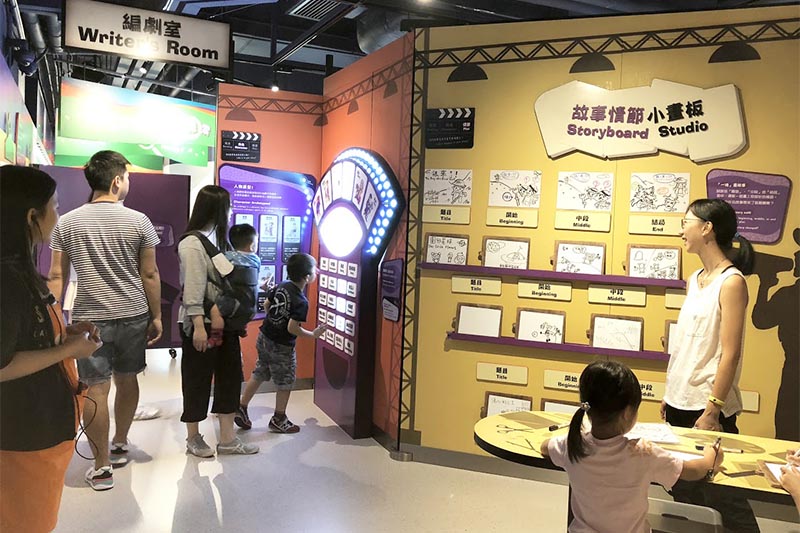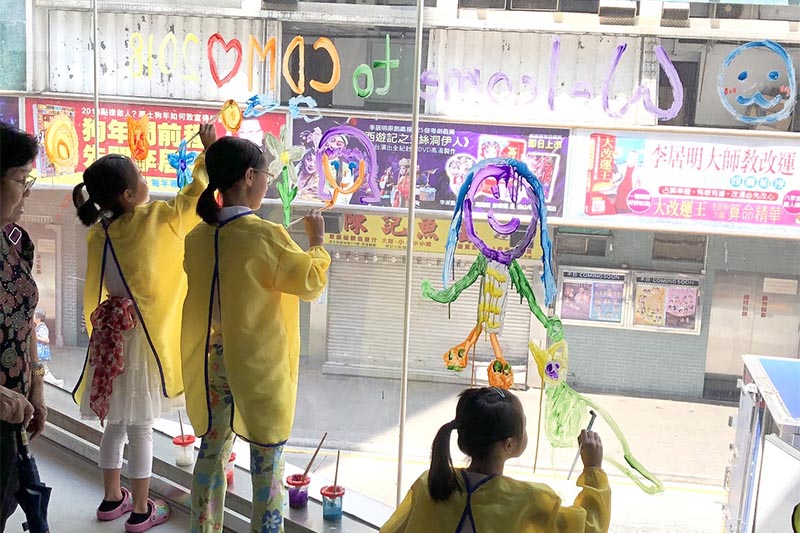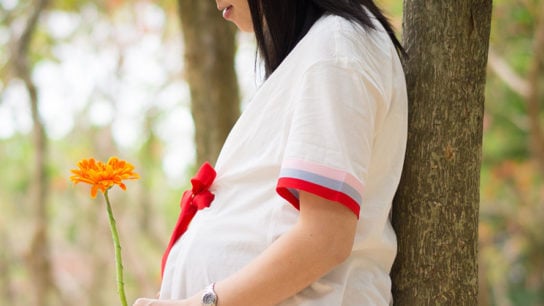Harvard Graduate School of Education alumna Serena Fan provides a different type of play-based learning experience for children and families at Hong Kong’s Children’s Discovery Museum. Read on to learn more.
Combatting the idea that sitting in a classroom is the best way to learn is Serena Fan – founder, Director of Education, and “doer-of-all” at Hong Kong’s first children’s museum. The Children’s Discovery Museum (CDM), having just opened this September, is already a hit with both its youngest and older adult visitors. Families head there to interact with the many exhibits, from testing their inventions at the Tinkering Lab and making discoveries about the natural world whilst climbing the Banyan Tree climber to travelling to places far and wide, with help from the Green Screen studio. A new fixture on the educational scene in Hong Kong in so many ways, Children’s Discovery Museum combines Serena’s passion and extensive experience in the early childhood education field to bring the concept of play as serious learning to Hong Kong’s academically-dominated environment.

Receiving her undergraduate degree at Tufts and having taught in the classroom for several years in both the US and Hong Kong, Serena spent three years in Beijing helping to build and operate kindergartens across China. After completing her Master’s degree, she became determined to bring something different to the city’s educational landscape, as she felt that Hong Kong already had an abundance of kindergartens and learning centres.
Bringing the first children’s museum to Hong Kong was no small feat and one that took three years to bring to fruition. “After successfully fundraising, finding a location, and working out the logistics to have her high school friend whose job in the States was to design exhibits for children’s museums to move back to Hong Kong, we started working on the design of the space and exhibits, as each exhibit is designed with an educational goal and purpose in mind,” Serena explained. Over 40 educational exhibits are spread out amongst four exhibit areas: Transit Tots, a space dedicated especially to children three years old and under; Our Story Stage!; Our Natural World, Our Consumer World; and Tinkering Lab. Families visiting are encouraged to interact with the exhibits, ask questions, think creatively, explore what interests them, and to always learn on their own terms, whether it be playing at the Sand Topography table to learn about the basics of topography, creating and directing their own puppet show, or learning about sustainability from a visual display showing how much waste is thrown away every three seconds in Hong Kong.

However fun it may look on the outside, Serena’s concept is not all sandcastles and puppeteering. Three years of preparation revolved around making sure Children’s Discovery Museum stayed true to the academics of play as serious learning. “There are decades and decades of research dedicated to the important benefits of play,” she explains. However, unfortunately for most adults, even though they know play is important they sometimes do not understand the value of it. For example, when a child is stacking blocks, most adults just view it as stacking blocks. However, the child is actually developing scientific knowledge and skills. Children are seeing gravity at work and determining rationales for what works, ‘If I stack a bigger block on top of a small one, it’ll topple over.’ It’s a scientific experiment and children are innately doing this. They’re not just stacking blocks, they’re learning, testing and experimenting.” As Serena sees it, especially in Asia, it is an outlook that needs more airtime. “In the case of most Hong Kong children, since all parents want to give their child the best, most think the solution is to take them to lots of classes. But, young children need to be playing. Whilst kindergartens and learning centres do provide an opportunity to play, parents ultimately have this mentality that a class means children should be sitting, listening, and doing what the teacher says, otherwise why else are they paying for children to play!”

Serena feels this situation of attending lots of structured classes at a very young age has long-term consequences. Children grow up thinking that following instructions means being good, so as young people, many in fact struggle to think for themselves when they eventually enter into a professional environment. “There is research telling us that if you explicitly teach a child how to interact with an object, they will be less creative to come up with new ideas. Whereas, if you just leave the object out, the child will experiment with it themselves and come up with way more ideas,” says Serena. She hopes to nurture this sort of critical thinking, creativity, and strong family-bonding as visitors interact with the various exhibits at the Children’s Discovery Museum. “Hopefully when adults come to the children’s museum, they’re realising, ‘Wow, I don’t have an adult teaching my child, but I’m learning with my child and my child is engaged, curious, asking questions, and they’re learning too,” she enthuses. “I hope families will see that difference and think, ‘Oh yeah, I don’t need to send my child to six extracurricular activities, maybe I’ll just come here and they’ll gain skills and knowledge this way.’”
In the few months since opening, Children’s Discovery Museum has more than converted many to its cause. Schools are proactively organising trips to the museum, and they see families returning again and again in their children’s free time. “That’s really the biggest compliment we could get,” says Serena. Looking forward, the museum is eager to reach out to children from all of Hong Kong’s nooks and crannies, especially those from underprivileged and low-income families. As Children’s Discovery Museum’s message that play and having fun is important for learning, they hope that all children will benefit from coming to experience the hands-on, interactive, and educational play space.




